Design Challenges in Hydrogen-Fueled Rotary Engine—A Review
Abstract
:1. Introduction
1.1. A Brief History of the Rotary Engine
1.2. Goal of This Review Article
2. Effects of Hydrogen Enrichment on Rotary Engine’s Performance
2.1. Hydrogen as an Alternative Fuel
2.2. Knock Issues
2.3. Leakage Issues
3. Research Methods
3.1. Trochoidal Profile Methods
3.2. Fuel Utilization Methods
3.3. Ignition Methods
3.4. Exhaust Gas Recirculation (EGR)
4. Computational Fluid Dynamics Methods
4.1. Dynamic Mesh Generation
4.2. Operating Conditions
5. Conclusions and Future Prospects
Author Contributions
Funding
Data Availability Statement
Conflicts of Interest
References
- Kweon, C.-B.M. A Review of Heavy-Fueled Rotary Engine Combustion Technologies; Army Research Lab: Adelphi, MD, USA, 2011. [Google Scholar]
- Drbal, M.A. Method of rotary engine performance prediction. Sci. J. Sil. Univ. Technol. Ser. Transp. 2020, 108, 37–43. [Google Scholar] [CrossRef]
- Qin, Z.; Jia, M.; Yang, H. Study on vortex characteristics and velocity distribution in small rotary engine. Energy 2020, 206, 118065. [Google Scholar] [CrossRef]
- Antonelli, M.; Baccioli, A.; Francesconi, M.; Desideri, U.; Martorano, L. Operating maps of a rotary engine used as an expander for micro-generation with various working fluids. Appl. Energy 2014, 113, 742–750. [Google Scholar] [CrossRef]
- Ribau, J.; Silva, C.; Brito, F.P.; Martins, J. Analysis of four-stroke, Wankel, and microturbine based range extenders for electric vehicles. Energy Convers. Manag. 2012, 58, 120–133. [Google Scholar] [CrossRef]
- Hsieh, C.-F.F.; Cheng, H.-Y.; Bhoir, M.B.; Tambuskar, D.; Hsieh, C.-F.F.; Yang, J.; Ji, C.; Wang, S.; Wang, D.; Ma, Z.; et al. Numerical investigation on the mixture formation and combustion processes of a gasoline rotary engine with direct injected hydrogen enrichment. Int. J. Hydrogen Energy 2022, 46, 385–397. [Google Scholar] [CrossRef]
- Ozcanli, M.; Bas, O.; Akar, M.A.; Yildizhan, S.; Serin, H. Recent studies on hydrogen usage in Wankel SI engine. Int. J. Hydrogen Energy 2018, 43, 18037–18045. [Google Scholar] [CrossRef]
- Jewkes, J.; Sawers, D.; Stillerman, R. The Wankel Rotary Piston Engine. In The Sources of Invention; Palgrave Macmillan: London, UK, 1969. [Google Scholar]
- Pascale, R.; Rohlen, T.P. The Mazda Turnaround. J. Jpn. Stud. 1983, 9, 219. [Google Scholar] [CrossRef]
- Cranswick, M. Mazda Rotary-Engined Cars from Cosmo 110S to RX-8; Veloce Publishing Ltd.: Dorchester, UK, 2016; ISBN 978-1-787116-64-1. [Google Scholar]
- Jones, C. An update of applicable automotive engine rotary stratified charge developments. SAE Tech. Pap. 1982, 820347. [Google Scholar] [CrossRef]
- Jones, C.; Lamping, H. Curtiss-Wright’s development status of the stratified charge rotating combustion engine. SAE Tech. Pap. 1971, 80, 1956–1980. [Google Scholar] [CrossRef]
- Ohkubo, M.; Tashima, S.; Shimizu, R.; Fuse, S.; Ebino, H. Developed technologies of the new rotary engine (RENESIS). In Proceedings of the 2004 SAE World Congress, Detroit, MI, USA, 8–11 March 2004. [Google Scholar] [CrossRef]
- German, J. Advanced Propulsion System Studies for General Aviation Aircraft; Williams International: Walled Lake, MI, USA, 2003. [Google Scholar]
- Norman, T.J. A Performance Model of a Spark Ignition Wankel Engine: Including the Effects of Crevice Volumes, Gas Leakage, and Heat Transfer. Ph.D. Thesis, University of Massachusetts, Amherst, MA, USA, 1983. Volume 2. [Google Scholar]
- Irion, C.E.; Mount, R.E. Stratified Charge Rotary Engine Critical Technology Enablement; Rotary Power International, Inc.: Wood-Ridge, NJ, USA, 1992; Volume I. [Google Scholar]
- Roberts, J.M. Heat Release Estimation and Prediction of Wankel Stratified-Charge Combustion Engine. Ph.D. Thesis, University of Pittsburgh, Pittsburgh, PA, USA, 1985. [Google Scholar]
- Fu, K.; Knobloch, A.J.; Martinez, F.C.; Walther, D.C.; Fernandez-Pello, C.; Pisano, A.P.; Liepmann, D. Design and fabrication of a silicon-based mems rotary engine. Am. Soc. Mech. Eng. Adv. Energy Syst. Div. AES 2001, 41, 303–308. [Google Scholar]
- LEE, C. Design and fabrication of a micro Wankel engine using MEMS technology. Microelectron. Eng. 2004, 73–74, 529–534. [Google Scholar] [CrossRef]
- Sprague, S.B.; Park, S.W.; Walther, D.C.; Pisano, A.P.; Fernandez-Pello, A.C. Development and characterisation of small-scale rotary engines. Int. J. Altern. Propuls. 2007, 1, 275–293. [Google Scholar] [CrossRef]
- Heller, D.A. International Strategic Alliances and Technology Strategy: The Case of Rotary-Engine Development at Mazda. Econ. Rev. 2005, 52, 31–56. [Google Scholar]
- Hosseini, S.E.; Wahid, M.A.; Ganjehkaviri, A. An overview of renewable hydrogen production from thermochemical process of oil palm solid waste in Malaysia. Energy Convers. Manag. 2015, 94, 415–429. [Google Scholar] [CrossRef]
- Safari, F.; Dincer, I. A review and comparative evaluation of thermochemical water splitting cycles for hydrogen production. Energy Convers. Manag. 2020, 205, 112182. [Google Scholar] [CrossRef]
- Shivaprasad, K.V.; Kumar, G.N.; Guruprasad, K.R. Performance, Emission and Fuel Induction System of Hydrogen Fuel Operated Spark Ignition Engine—A Review. Int. J. Mod. Eng. Res. 2012, 2, 565–571. [Google Scholar]
- Fayaz, H.; Saidur, R.; Razali, N.; Anuar, F.S.; Saleman, A.R.; Islam, M.R. An overview of hydrogen as a vehicle fuel. Renew. Sustain. Energy Rev. 2012, 16, 5511–5528. [Google Scholar] [CrossRef]
- Shadidi, B.; Najafi, G.; Yusaf, T. A review of hydrogen as a fuel in internal combustion engines. Energies 2021, 14, 6209. [Google Scholar] [CrossRef]
- Meng, H.; Ji, C.; Wang, D.; Xin, G.; Chang, K.; Yang, J.; Wang, S. Research on the load control of hydrogen-fueled Wankel rotary engine. Int. J. Hydrogen Energy 2022, 47, 16665–16675. [Google Scholar] [CrossRef]
- Gao, J.; Tian, G.; Ma, C.; Balasubramanian, D.; Xing, S.; Jenner, P. Numerical investigations of combustion and emissions characteristics of a novel small scale opposed rotary piston engine fuelled with hydrogen at wide open throttle and stoichiometric conditions. Energy Convers. Manag. 2020, 221, 113178. [Google Scholar] [CrossRef]
- Gao, J.; Xing, S.; Tian, G.; Ma, C.; Zhao, M.; Jenner, P. Numerical simulation on the combustion and NOx emission characteristics of a turbocharged opposed rotary piston engine fuelled with hydrogen under wide open throttle conditions. Fuel 2021, 285, 119210. [Google Scholar] [CrossRef]
- Meng, H.; Ji, C.; Yang, J.; Wang, S.; Xin, G.; Chang, K.; Wang, H. Experimentally investigating the asynchronous ignition on a hydrogen-fueled Wankel rotary engine. Fuel 2022, 312, 122988. [Google Scholar] [CrossRef]
- Vadlamudi, S.; Gugulothu, S.K.; Panda, J.K.; Deepanraj, B.; Kumar, P.R.V. Paradigm analysis of performance and exhaust emissions in CRDI engine powered with hydrogen and Hydrogen/CNG fuels: A green fuel approach under different injection strategies. Int. J. Hydrogen Energy 2022, in press. [Google Scholar] [CrossRef]
- Abdalla, A.M.; Hossain, S.; Nisfindy, O.B.; Azad, A.T.; Dawood, M.; Azad, A.K. Hydrogen production, storage, transportation and key challenges with applications: A review. Energy Convers. Manag. 2018, 165, 602–627. [Google Scholar] [CrossRef]
- Hosseini, S.E.; Butler, B. An overview of development and challenges in hydrogen powered vehicles. Int. J. Green Energy 2020, 17, 13–37. [Google Scholar] [CrossRef] [Green Version]
- Sun, Z.Y.; Li, G.X. On reliability and flexibility of sustainable energy application route for vehicles in China. Renew. Sustain. Energy Rev. 2015, 51, 830–846. [Google Scholar] [CrossRef]
- Matthias, N.S.; Wallner, T.; Scarcelli, R. A Hydrogen Direct Injection Engine Concept that Exceeds U.S. DOE Light-Duty Efficiency Targets. SAE Int. J. Engines 2012, 5, 838–849. [Google Scholar] [CrossRef]
- Boretti, A. Hydrogen internal combustion engines to 2030. Int. J. Hydrogen Energy 2020, 45, 23692–23703. [Google Scholar] [CrossRef]
- Naganuma, K.; Yamane, K.; Takagi, Y.; Kawamura, A.; Yanai, T.; Sato, Y. Summary and Progress of the Hydrogen ICE Truck Development Project. SAE Int. J. Commer. Veh. 2009, 2, 110–117. [Google Scholar]
- Meng, H.; Ji, C.; Yang, J.; Wang, S.; Chang, K.; Xin, G. Experimental study of the effects of excess air ratio on combustion and emission characteristics of the hydrogen-fueled rotary engine. Int. J. Hydrogen Energy 2021, 46, 32261–32272. [Google Scholar] [CrossRef]
- Wang, D.; Ji, C.; Wang, S.; Yang, J.; Wang, Z. Numerical study of the premixed ammonia-hydrogen combustion under engine-relevant conditions. Int. J. Hydrogen Energy 2021, 46, 2667–2683. [Google Scholar] [CrossRef]
- Dhyani, V.; Subramanian, K.A. Control of backfire and NOx emission reduction in a hydrogen fueled multi-cylinder spark ignition engine using cooled EGR and water injection strategies. Int. J. Hydrogen Energy 2019, 44, 6287–6298. [Google Scholar] [CrossRef]
- Gao, J.; Wang, X.; Song, P.; Tian, G.; Ma, C. Review of the backfire occurrences and control strategies for port hydrogen injection internal combustion engines. Fuel 2022, 307, 121553. [Google Scholar] [CrossRef]
- Gong, C.; Si, X.; Liu, F. Combined effects of excess air ratio and EGR rate on combustion and emissions behaviors of a GDI engine with CO2 as simulated EGR (CO2) at low load. Fuel 2021, 293, 120442. [Google Scholar] [CrossRef]
- Yip, H.L.; Srna, A.; Yuen, A.C.Y.; Kook, S.; Taylor, R.A.; Yeoh, G.H.; Medwell, P.R.; Chan, Q.N. A review of hydrogen direct injection for internal combustion engines: Towards carbon-free combustion. Appl. Sci. 2019, 9, 4842. [Google Scholar] [CrossRef] [Green Version]
- Gürbüz, H.; Akçay, İ.H. Evaluating the effects of boosting intake-air pressure on the performance and environmental-economic indicators in a hydrogen-fueled SI engine. Int. J. Hydrogen Energy 2021, 46, 28801–28810. [Google Scholar] [CrossRef]
- Ji, C.; Meng, H.; Wang, S.; Wang, D.; Yang, J.; Shi, C.; Ma, Z. Realizing stratified mixtures distribution in a hydrogen-enriched gasoline Wankel engine by different compound intake methods. Energy Convers. Manag. 2020, 203, 112230. [Google Scholar] [CrossRef]
- Shi, C.; Zhang, Z.; Ji, C.; Li, X.; Di, L.; Wu, Z. Potential improvement in combustion and pollutant emissions of a hydrogen-enriched rotary engine by using novel recess configuration. Chemosphere 2022, 299, 134491. [Google Scholar] [CrossRef]
- Wang, H.; Ji, C.; Su, T.; Shi, C.; Ge, Y.; Yang, J.; Wang, S. Comparison and implementation of machine learning models for predicting the combustion phases of hydrogen-enriched Wankel rotary engines. Fuel 2022, 310, 122371. [Google Scholar] [CrossRef]
- Su, T.; Ji, C.; Wang, S.; Shi, L.; Yang, J.; Cong, X. Idle performance of a hydrogen rotary engine at different excess air ratios. Int. J. Hydrogen Energy 2018, 43, 2443–2451. [Google Scholar] [CrossRef]
- Yang, J.; Meng, H.; Ji, C.; Wang, S. Comparatively investigating the leading and trailing spark plug on the hydrogen rotary engine. Fuel 2022, 308, 122005. [Google Scholar] [CrossRef]
- Meng, H.; Ji, C.; Xin, G.; Yang, J.; Chang, K.; Wang, S. Comparison of combustion, emission and abnormal combustion of hydrogen-fueled Wankel rotary engine and reciprocating piston engine. Fuel 2022, 318, 123675. [Google Scholar] [CrossRef]
- Meng, H.; Ji, C.; Su, T.; Yang, J.; Chang, K.; Xin, G.; Wang, S. Analyzing characteristics of knock in a hydrogen-fueled Wankel rotary engine. Energy 2022, 250, 123828. [Google Scholar] [CrossRef]
- Marchenko, O.V.; Solomin, S.V. The future energy: Hydrogen versus electricity. Int. J. Hydrogen Energy 2015, 40, 3801–3805. [Google Scholar] [CrossRef]
- Muradov, N.Z.; Veziroǧlu, T.N. “Green” path from fossil-based to hydrogen economy: An overview of carbon-neutral technologies. Int. J. Hydrogen Energy 2008, 33, 6804–6839. [Google Scholar] [CrossRef]
- Durbin, D.J.; Malardier-Jugroot, C. Review of hydrogen storage techniques for on board vehicle applications. Int. J. Hydrogen Energy 2013, 38, 14595–14617. [Google Scholar] [CrossRef]
- Kaur, M.; Pal, K. Review on hydrogen storage materials and methods from an electrochemical viewpoint. J. Energy Storage 2019, 23, 234–249. [Google Scholar] [CrossRef]
- Mohtasham, J. Review Article-Renewable Energies. Energy Procedia 2015, 74, 1289–1297. [Google Scholar] [CrossRef] [Green Version]
- Shi, H.; Uddeen, K.; An, Y.; Pei, Y.; Johansson, B. Statistical study on engine knock oscillation and heat release using multiple spark plugs and pressure sensors. Fuel 2021, 297, 120746. [Google Scholar] [CrossRef]
- Shi, H.; Uddeen, K.; An, Y.; Pei, Y.; Johansson, B. Multiple spark plugs coupled with pressure sensors: A new approach for knock mechanism study on SI engines. Energy 2021, 227, 120382. [Google Scholar] [CrossRef]
- Dhyani, V.; Subramanian, K.A. Experimental investigation on effects of knocking on backfire and its control in a hydrogen fueled spark ignition engine. Int. J. Hydrogen Energy 2018, 43, 7169–7178. [Google Scholar] [CrossRef]
- Szwaja, S. Knock and combustion rate interaction in a hydrogen fuelled combustion engine. J. KONES 2011, 18, 431–438. [Google Scholar]
- Szwaja, S.; Naber, J.D. Dual nature of hydrogen combustion knock. Int. J. Hydrogen Energy 2013, 38, 12489–12496. [Google Scholar] [CrossRef]
- Li, Y.; Gao, W.; Li, Y.; Fu, Z.; Zou, J. Numerical investigation on combustion and knock formation mechanism of hydrogen direct injection engine. Fuel 2022, 316, 123302. [Google Scholar] [CrossRef]
- Salvi, B.L.; Subramanian, K.A. Experimental investigation on effects of exhaust gas recirculation on flame kernel growth rate in a hydrogen fuelled spark ignition engine. Appl. Therm. Eng. 2016, 107, 48–54. [Google Scholar] [CrossRef]
- Szwaja, S.; Cupiał, K.; Grab-Rogaliński, K. Anomalies in Combustion of Hydrogen in a Si Engine Modified to Work as a Supercharged One. J. KONES. Powertrain Transp. 2015, 19, 437–442. [Google Scholar] [CrossRef]
- Chen, W.; Yu, S.; Zuo, Q.; Zhu, G.; Zhang, B.; Yang, X. Combined Effect of Air Intake Method and Hydrogen Injection Timing on Airflow Movement and Mixture Formation in a hydrogen direct injection rotary engine. Int. J. Hydrogen Energy 2022, 47, 12739–12758. [Google Scholar] [CrossRef]
- Zou, R.; Liu, J.; Jiao, H.; Wang, N.; Zhao, J. Numerical study on auto-ignition development and knocking characteristics of a downsized rotary engine under different inlet pressures. Fuel 2022, 309, 122046. [Google Scholar] [CrossRef]
- Yang, J.; Ji, C.; Wang, S.; Shi, C.; Wang, D.; Ma, Z.; Yang, Z. Numerical study of compound intake on mixture formation and combustion process in a hydrogen-enriched gasoline Wankel rotary engine. Energy Convers. Manag. 2019, 185, 66–74. [Google Scholar] [CrossRef]
- Yang, Z.; Ji, C.; Huang, X.; Yang, J.; Wang, H.; Wang, S. Modeling and analysis of apex seal leakage in a hydrogen fueled Wankel rotary engine. Fuel 2023, 331, 125848. [Google Scholar] [CrossRef]
- Picard, M.; Tian, T.; Nishino, T. Predicting Gas Leakage in the Rotary Engine-Part I: Apex and Corner Seal. J. Eng. Gas Turbines Power 2016, 138, 062503. [Google Scholar] [CrossRef]
- Picard, M.; Tian, T.; Nishino, T. Predicting Gas Leakage in the Rotary Engine-Part II: Side Seals and Summary. J. Eng. Gas Turbines Power 2016, 138, 062504. [Google Scholar] [CrossRef]
- Fan, B.; Zeng, Y.; Pan, J.; Fang, J.; Hammed, A.S.; Wang, Y. Evaluation and analysis of injection strategy in a peripheral ported rotary engine fueled with natural gas/hydrogen blends under the action of apex seal leakage. Fuel 2022, 310, 122315. [Google Scholar] [CrossRef]
- Fan, B.; Wang, Y.; Zhang, Y.; Pan, J.; Yang, W.; Zeng, Y. Numerical Investigation on the Combustion Performance of a Natural Gas/Hydrogen Dual Fuel Rotary Engine under the Action of Apex Seal Leakage. Energy Fuels 2021, 35, 770–784. [Google Scholar] [CrossRef]
- Fan, B.; Zeng, Y.; Pan, J.; Fang, J.; Salami, H.A.; Wang, Y. Numerical study of injection strategy on the combustion process in a peripheral ported rotary engine fueled with natural gas/hydrogen blends under the action of apex seal leakage. Energy 2022, 242, 122532. [Google Scholar] [CrossRef]
- Fan, B.; Zeng, Y.; Zhang, Y.; Pan, J.; Yang, W.; Wang, Y. Research on the hydrogen injection strategy of a direct injection natural gas/hydrogen rotary engine considering apex seal leakage. Int. J. Hydrogen Energy 2021, 46, 9234–9251. [Google Scholar] [CrossRef]
- Wang, H.; Ji, C.; Shi, C.; Ge, Y.; Meng, H.; Yang, J.; Chang, K.; Yang, Z.; Wang, S.; Wang, X. Modeling and parametric study of the performance-emissions trade-off of a hydrogen Wankel rotary engine. Fuel 2022, 318, 123662. [Google Scholar] [CrossRef]
- Wang, W.; Zuo, Z.; Liu, J. Miniaturization limitations of rotary internal combustion engines. Energy Convers. Manag. 2016, 112, 101–114. [Google Scholar] [CrossRef]
- Hsieh, C.F.; Chen, K.T.; Johar, T. Fluid flow characteristics of two types rotary engines. Int. J. Hydrogen Energy 2021, 46, 40154–40174. [Google Scholar] [CrossRef]
- Zhang, S.; Liu, J.; Zuo, Z.; Zhang, Y. An analytical investigation of oil film thickness for the apex seal in a small Wankel rotary engine. Tribol. Int. 2017, 116, 383–393. [Google Scholar] [CrossRef]
- Harikrishnan, T.V.; Challa, S.; Radhakrishna, D. Numerical Investigation on the Effects of Flame Propagation in Rotary Engine Performance with Leakage and Different Recess Shapes Using Three-Dimensional Computational Fluid Dynamics. J. Energy Resour. Technol. Trans. ASME 2016, 138, 052210. [Google Scholar] [CrossRef]
- Hwang, P.W.; Chen, X.C.; Cheng, H.C. Influences of Ignition Timing, Spark Plug and Intake Port Locations on the Combustion Performance of a Simulated Rotary Engine. J. Mech. 2016, 32, 579–591. [Google Scholar] [CrossRef]
- Bagnell, M. (12) Patent Application Publication (10). U.S. Patent 2017/0167368 A1, 18 May 2017. [Google Scholar]
- Warren, S.; Yang, D.C.H. Design of rotary engines from the apex seal profile (Abbr.: Rotary engine design by apex seal). Mech. Mach. Theory 2013, 64, 200–209. [Google Scholar] [CrossRef]
- Rose, S.W.; Yang, D.C.H. Wide and multiple apex seals for the rotary engine: (Abbr.: Multi-Apex-Seals for the Rotary Engine). Mech. Mach. Theory 2014, 74, 202–215. [Google Scholar] [CrossRef]
- Rose, S.W.; Yang, D.C.H. The Deviation Function Method of Rotary Engine Design by Geometric Parameters. J. Mech. Des. 2014, 136, 051004. [Google Scholar] [CrossRef]
- Hsieh, C.-F.; Cheng, H.-Y. Effects of Various Geometric Designs on the Flow Characteristics of a Triangular Rotary Engine. Mech. Eng. Res. 2015, 5, 1–11. [Google Scholar] [CrossRef]
- Bhoir, M.B.; Tambuskar, D. Analysis of Wankel Rotary Engine using Deviation Function for Performance Improvement. Int. J. Interdiscip. Innov. Res. Dev. 2017, 2, 25–31. [Google Scholar]
- Hsieh, C.F. Dynamics analysis of the triangular rotary engine structures. J. Eng. Gas Turbines Power 2018, 140, 112804. [Google Scholar] [CrossRef]
- Yang, J.; Ji, C.; Wang, S.; Wang, D.; Shi, C.; Ma, Z.; Zhang, B. Numerical study of hydrogen direct injection strategy on mixture formation and combustion process in a partially premixed gasoline Wankel rotary engine. Energy Convers. Manag. 2018, 176, 184–193. [Google Scholar] [CrossRef]
- Amrouche, F.; Erickson, P.A.; Varnhagen, S.; Park, J.W. An experimental analysis of hydrogen enrichment on combustion characteristics of a gasoline Wankel engine at full load and lean burn regime. Int. J. Hydrogen Energy 2018, 43, 19250–19259. [Google Scholar] [CrossRef]
- Amrouche, F.; Erickson, P.A.; Varnhagen, S.; Park, J.W. An experimental study of a hydrogen-enriched ethanol fueled Wankel rotary engine at ultra lean and full load conditions. Energy Convers. Manag. 2016, 123, 174–184. [Google Scholar] [CrossRef]
- Sadiq, G.A.; Al-Dadah, R.; Mahmoud, S. Development of rotary Wankel devices for hybrid automotive applications. Energy Convers. Manag. 2019, 202, 112159. [Google Scholar] [CrossRef]
- Amrouche, F.; Erickson, P.A.; Park, J.W.; Varnhagen, S. Extending the lean operation limit of a gasoline Wankel rotary engine using hydrogen enrichment. Int. J. Hydrogen Energy 2016, 41, 14261–14271. [Google Scholar] [CrossRef]
- Fan, B.; Wang, J.; Pan, J.; Zeng, Y.; Fang, J.; Lu, Q.; Wu, X.; Chen, W.; Qi, X. Computational study of hydrogen injection strategy on the combustion performance of a direct injection rotary engine fueled with natural gas/hydrogen blends. Fuel 2022, 328, 125190. [Google Scholar] [CrossRef]
- Pan, J.; Chen, W.; Yang, W.; Xiao, M.; Zhu, Y.; Fan, B. Effects of intake and exhaust valve timing on the performance of an air-powered rotary engine. Environ. Prog. Sustain. Energy 2018, 37, 1462–1474. [Google Scholar] [CrossRef]
- Fan, B.; Pan, J.; Yang, W.; Chen, W.; Bani, S. The influence of injection strategy on mixture formation and combustion process in a direct injection natural gas rotary engine. Appl. Energy 2017, 187, 663–674. [Google Scholar] [CrossRef]
- Chen, W.; Pan, J.; Liu, Y.; Fan, B.; Liu, H.; Otchere, P. Numerical investigation of direct injection stratified charge combustion in a natural gas-diesel rotary engine. Appl. Energy 2019, 233–234, 453–467. [Google Scholar] [CrossRef]
- Yang, J.; Ji, C.; Wang, S.; Wang, D.; Ma, Z.; Ma, L. A comparative study of mixture formation and combustion processes in a gasoline Wankel rotary engine with hydrogen port and direct injection enrichment. Energy Convers. Manag. 2018, 168, 21–31. [Google Scholar] [CrossRef]
- Otchere, P.; Pan, J.; Fan, B.; Chen, W.; Lu, Y.; Jianxing, L. Mixture formation and combustion process of a biodiesel fueled direct injection rotary engine (DIRE) considering injection timing, spark timing and equivalence ratio—CFD study. Energy Convers. Manag. 2020, 217, 112948. [Google Scholar] [CrossRef]
- Chen, W.; Pan, J.; Fan, B.; Otchere, P.; Miao, N.; Lu, Y. Numerical investigation of dual-fuel injection timing on air-fuel mixing and combustion process in a novel natural gas-diesel rotary engine. Energy Convers. Manag. 2018, 176, 334–348. [Google Scholar] [CrossRef]
- Zambalov, S.D.; Yakovlev, I.A.; Maznoy, A.S. Effect of multiple fuel injection strategies on mixture formation and combustion in a hydrogen-fueled rotary range extender for battery electric vehicles. Energy Convers. Manag. 2020, 220, 113097. [Google Scholar] [CrossRef]
- Ji, C.; Chang, K.; Wang, S.; Yang, J.; Wang, D.; Meng, H.; Wang, H. Effect of injection strategy on the mixture formation and combustion process in a gasoline direct injection rotary engine. Fuel 2021, 304, 121428. [Google Scholar] [CrossRef]
- Zou, R.; Liu, J.; Wang, N.; Jiao, H. Combined effects of intake oxygen enrichment, intake pressure and temperature on combustion behavior and emission characteristics of a small-scaled rotary engine. Appl. Therm. Eng. 2022, 207, 118096. [Google Scholar] [CrossRef]
- Chang, K.; Ji, C.; Wang, S.; Yang, J.; Meng, H.; Wang, H.; Xin, G. Comparative study on different spark plug positions of a rotary engine with gasoline port and direct injection. Fuel 2022, 310, 122376. [Google Scholar] [CrossRef]
- Deng, X.; Feng, Z.; Lei, J.; Liu, Y.; Jia, D. Influence of Intake Pipe Deflection Angle on In-Cylinder Flow and Combustion Characteristics of a Rotary Engine. J. Energy Resour. Technol. Trans. ASME 2022, 144, 082302. [Google Scholar] [CrossRef]
- Wang, H.; Ji, C.; Shi, C.; Wang, S.; Yang, J.; Ge, Y. Investigation of the gas injection rate shape on combustion, knock and emissions behavior of a rotary engine with hydrogen direct-injection enrichment. Int. J. Hydrogen Energy 2021, 46, 14790–14804. [Google Scholar] [CrossRef]
- Jiao, H.; Zou, R.; Wang, N.; Luo, B.; Pan, W.; Liu, J. Optimization design of the ignition system for Wankel rotary engine considering ignition environment, flow, and combustion. Appl. Therm. Eng. 2022, 201, 117713. [Google Scholar] [CrossRef]
- Zambalov, S.D.; Yakovlev, I.A.; Skripnyak, V.A. Numerical simulation of hydrogen combustion process in rotary engine with laser ignition system. Int. J. Hydrogen Energy 2017, 42, 17251–17259. [Google Scholar] [CrossRef]
- Taskiran, O.O. Improving burning speed by using hydrogen enrichment and turbulent jet ignition system in a rotary engine. Int. J. Hydrogen Energy 2021, 46, 29649–29662. [Google Scholar] [CrossRef]
- Ma, D.S.; Sun, Z.Y. Progress on the studies about NOx emission in PFI-H2ICE. Int. J. Hydrogen Energy 2020, 45, 10580–10591. [Google Scholar] [CrossRef]
- Galloni, E.; Fontana, G.; Palmaccio, R. Effects of exhaust gas recycle in a downsized gasoline engine. Appl. Energy 2013, 105, 99–107. [Google Scholar] [CrossRef]
- Gong, C.; Si, X.; Liu, F. Comparative analysis on combustion and emissions between CO2 and EGR dilution GDI engine at half-load, stoichiometric and lean-burn conditions. Fuel 2022, 309, 122216. [Google Scholar] [CrossRef]
- Gong, C.; Si, X.; Liu, F. Combustion and emissions behaviors of a stoichiometric GDI engine with simulated EGR (CO2) at low load and different spark timings. Fuel 2021, 295, 120614. [Google Scholar] [CrossRef]
- Zhen, X.; Wang, Y.; Xu, S.; Zhu, Y.; Tao, C.; Xu, T.; Song, M. The engine knock analysis—An overview. Appl. Energy 2012, 92, 628–636. [Google Scholar] [CrossRef]
- Verhelst, S.; Maesschalck, P.; Rombaut, N.; Sierens, R. Increasing the power output of hydrogen internal combustion engines by means of supercharging and exhaust gas recirculation. Int. J. Hydrogen Energy 2009, 34, 4406–4412. [Google Scholar] [CrossRef]
- Fontana, G.; Galloni, E. Experimental analysis of a spark-ignition engine using exhaust gas recycle at WOT operation. Appl. Energy 2010, 87, 2187–2193. [Google Scholar] [CrossRef]
- Chaichan, M. EGR effects on hydrogen engines performance and emissions. Int. J. Sci. Eng. Res. 2016, 7, 80–90. [Google Scholar]
- Safari, H.; Jazayeri, S.A.; Ebrahimi, R. Potentials of NOX emission reduction methods in SI hydrogen engines: Simulation study. Int. J. Hydrogen Energy 2009, 34, 1015–1025. [Google Scholar] [CrossRef]
- Fan, B.; Pan, J.; Tang, A.; Pan, Z.; Zhu, Y.; Xue, H. Experimental and numerical investigation of the fluid flow in a side-ported rotary engine. Energy Convers. Manag. 2015, 95, 385–397. [Google Scholar] [CrossRef]
- Fan, B.; Zhang, Y.; Pan, J.; Liu, Y.; Chen, W.; Otchere, P.; Wei, A.; He, R. The influence of hydrogen injection strategy on mixture formation and combustion process in a port injection (PI) rotary engine fueled with natural gas/hydrogen blends. Energy Convers. Manag. 2018, 173, 527–538. [Google Scholar] [CrossRef]
- Fan, B.; Pan, J.; Liu, Y.; Zhu, Y.; Pan, Z.; Chen, W.; Otchere, P. Effect of hydrogen injection strategies on mixture formation and combustion process in a hydrogen direct injection plus natural gas port injection rotary engine. Energy Convers. Manag. 2018, 160, 150–164. [Google Scholar] [CrossRef]
- Sadiq, G.A.; Tozer, G.; Al-Dadah, R.; Mahmoud, S. CFD simulations of compressed air two stage rotary Wankel expander—Parametric analysis. Energy Convers. Manag. 2017, 142, 42–52. [Google Scholar] [CrossRef]
- Babayev, R.; Andersson, A.; Dalmau, A.S.; Im, H.G.; Johansson, B. Computational characterization of hydrogen direct injection and nonpremixed combustion in a compression-ignition engine. Int. J. Hydrogen Energy 2021, 46, 18678–18696. [Google Scholar] [CrossRef]
- TASKIRAN, O.O. Fuel-air mixing process of low pressure direct injection in a side ported rotary engine. Int. J. Automot. Eng. Technol. 2019, 8, 186–194. [Google Scholar] [CrossRef]
- Jiao, H.; Ye, X.; Zou, R.; Wang, N.; Liu, J. Comparative study on ignition and combustion between conventional spark-ignition method and near-wall surface ignition method for small-scale Wankel rotary engine. Energy 2022, 255, 124500. [Google Scholar] [CrossRef]
- Taskiran, O.O.; Calik, A.T.; Akin Kutlar, O. Comparison of flow field and combustion in single and double side ported rotary engine. Fuel 2019, 254, 115651. [Google Scholar] [CrossRef]
- Lee, C.-E.; Yu, H.; Kim, D.; Park, T. Validation of CFD Analysis and Flow Characteristics of GP3 Rotary Engine at Motoring Condition. J. Korean Soc. Combust. 2020, 25, 11–20. [Google Scholar] [CrossRef]
- Fan, B.W.; Pan, J.F.; Pan, Z.H.; Tang, A.K.; Zhu, Y.J.; Xue, H. Effects of pocket shape and ignition slot locations on the combustion processes of a rotary engine fueled with natural gas. Appl. Therm. Eng. 2015, 89, 11–27. [Google Scholar] [CrossRef]
- Yang, X.; Gupta, S.; Kuo, T.W.; Gopalakrishnan, V. RANS and large Eddy simulation of internal combustion engine flows-A comparative study. J. Eng. Gas Turbines Power 2014, 136, 051507. [Google Scholar] [CrossRef]
- Suryan, A.; Kim, H.D.; Setoguchi, T. Comparative study of turbulence models performance for refueling of compressed hydrogen tanks. Int. J. Hydrogen Energy 2013, 38, 9562–9569. [Google Scholar] [CrossRef]
- Argyropoulos, C.D.; Markatos, N.C. Recent advances on the numerical modelling of turbulent flows. Appl. Math. Model. 2015, 39, 693–732. [Google Scholar] [CrossRef]

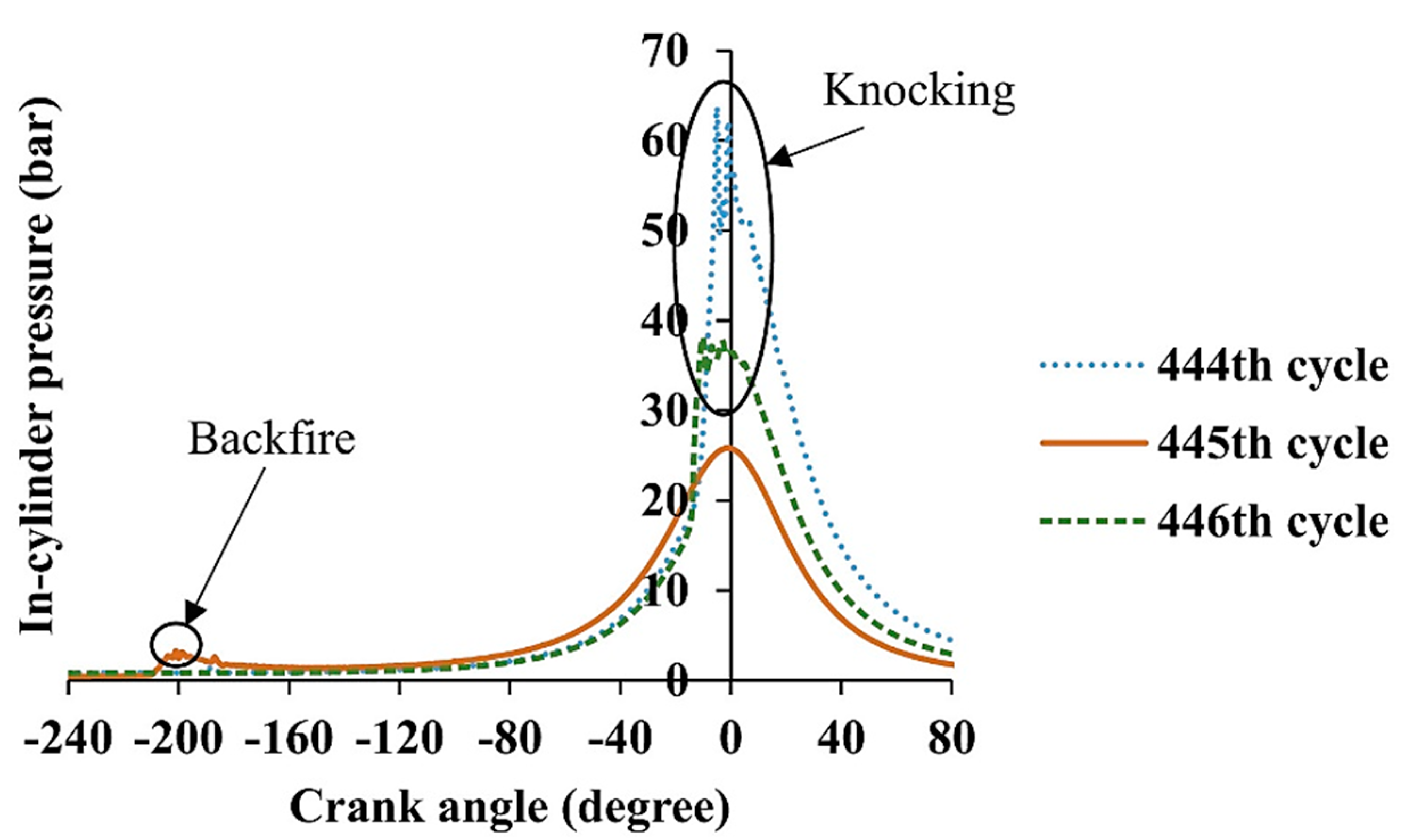
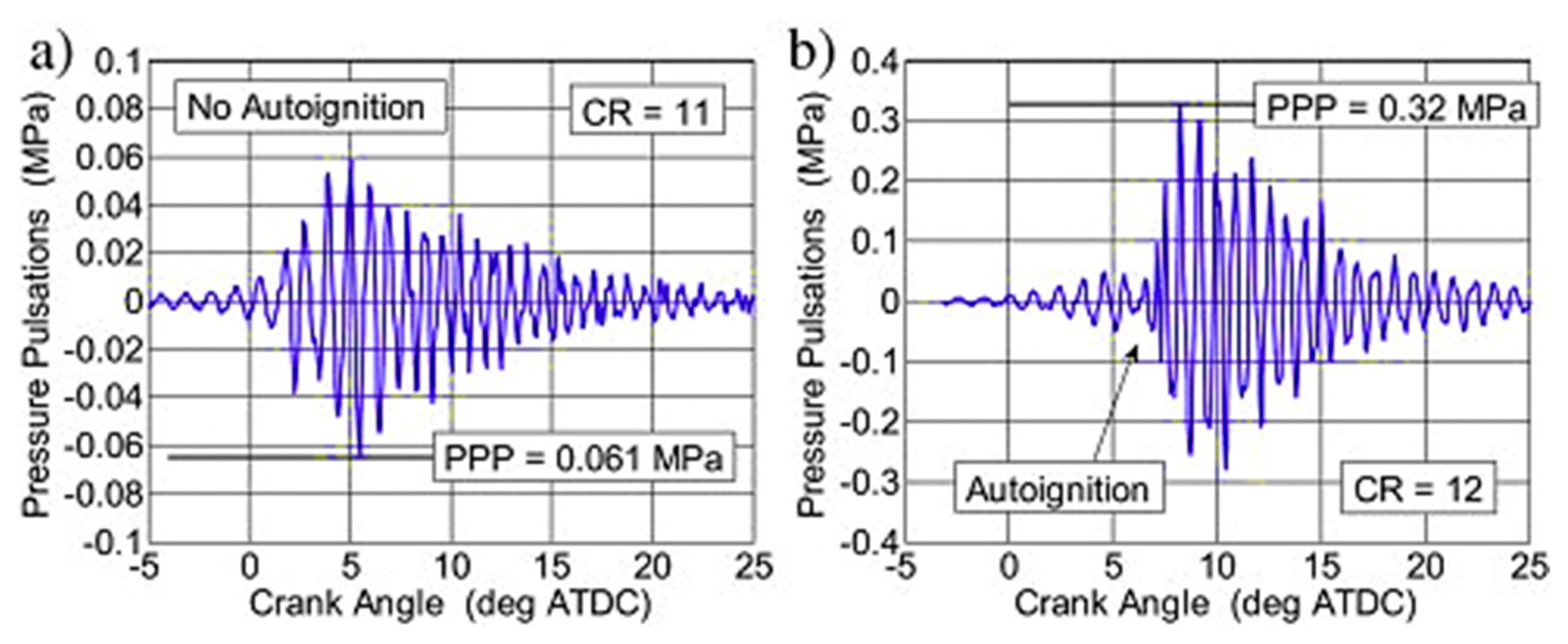
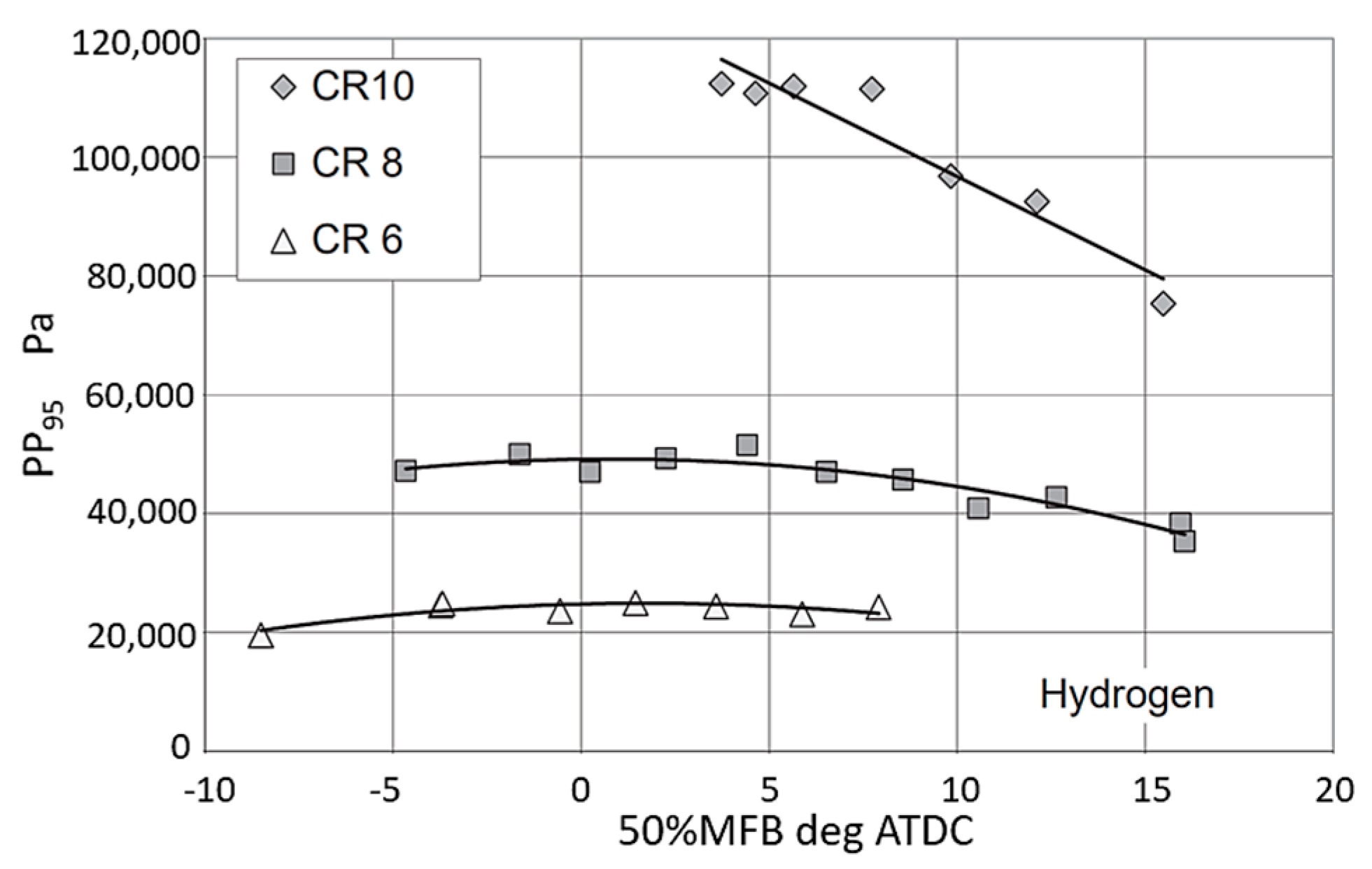
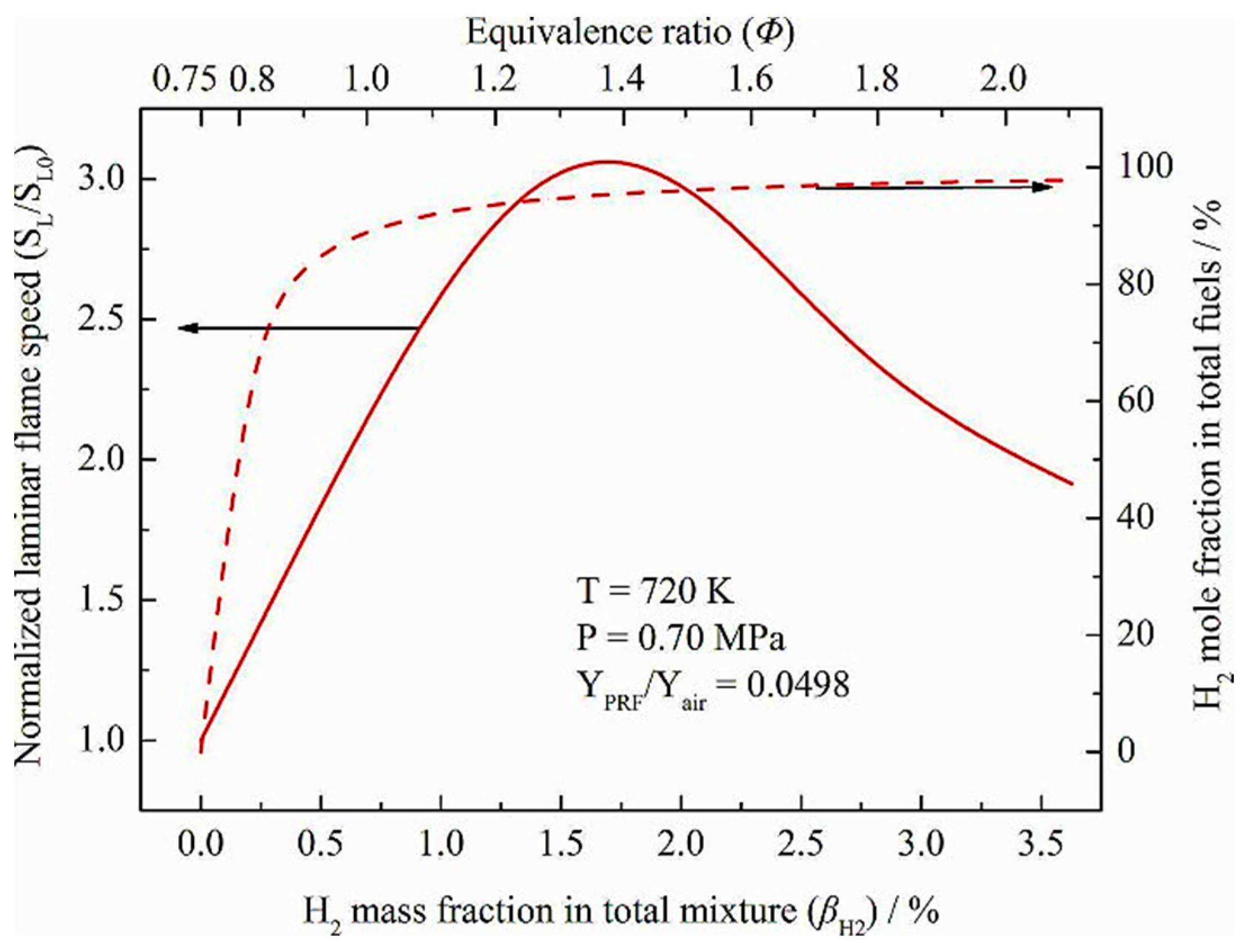


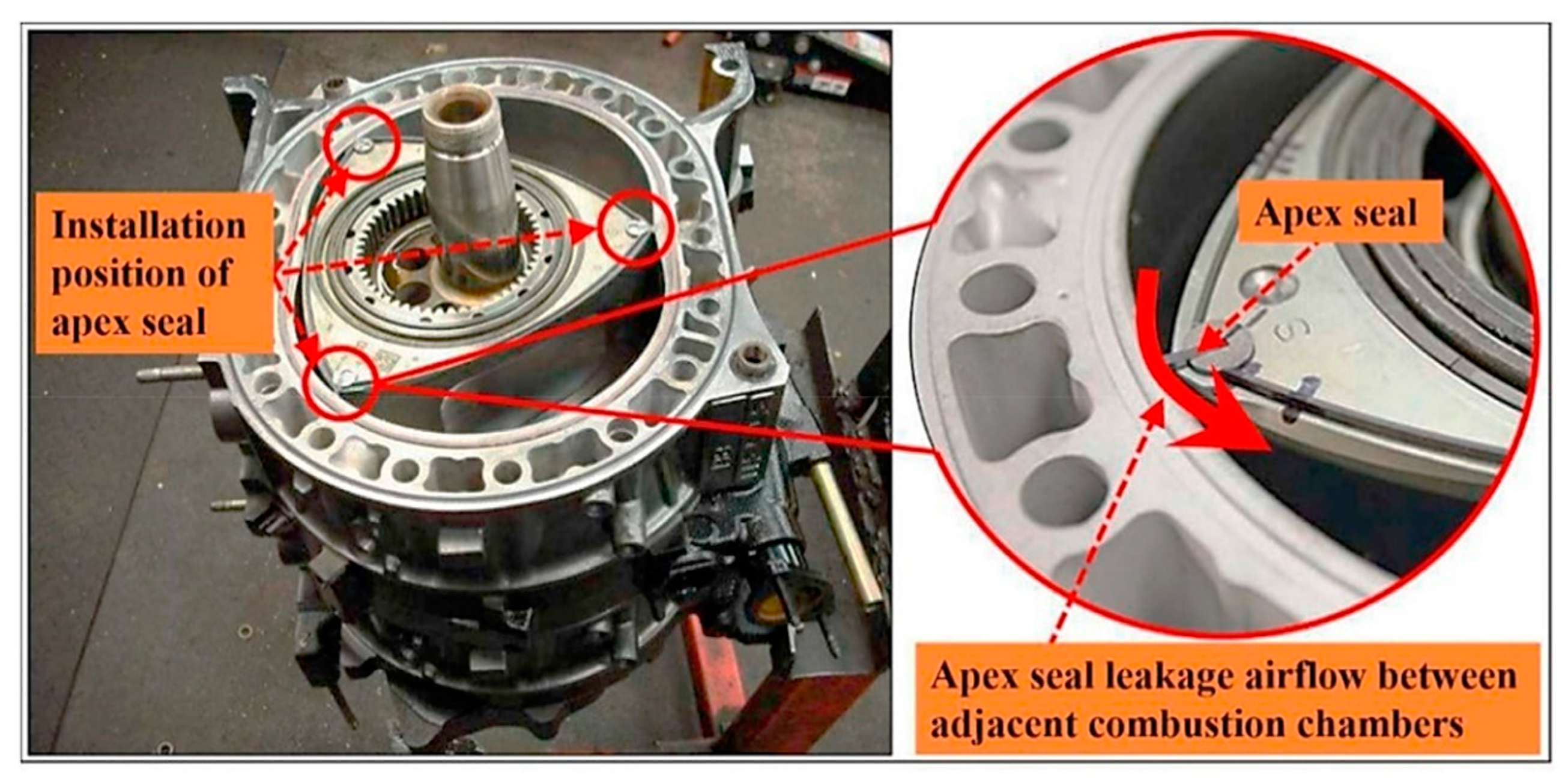
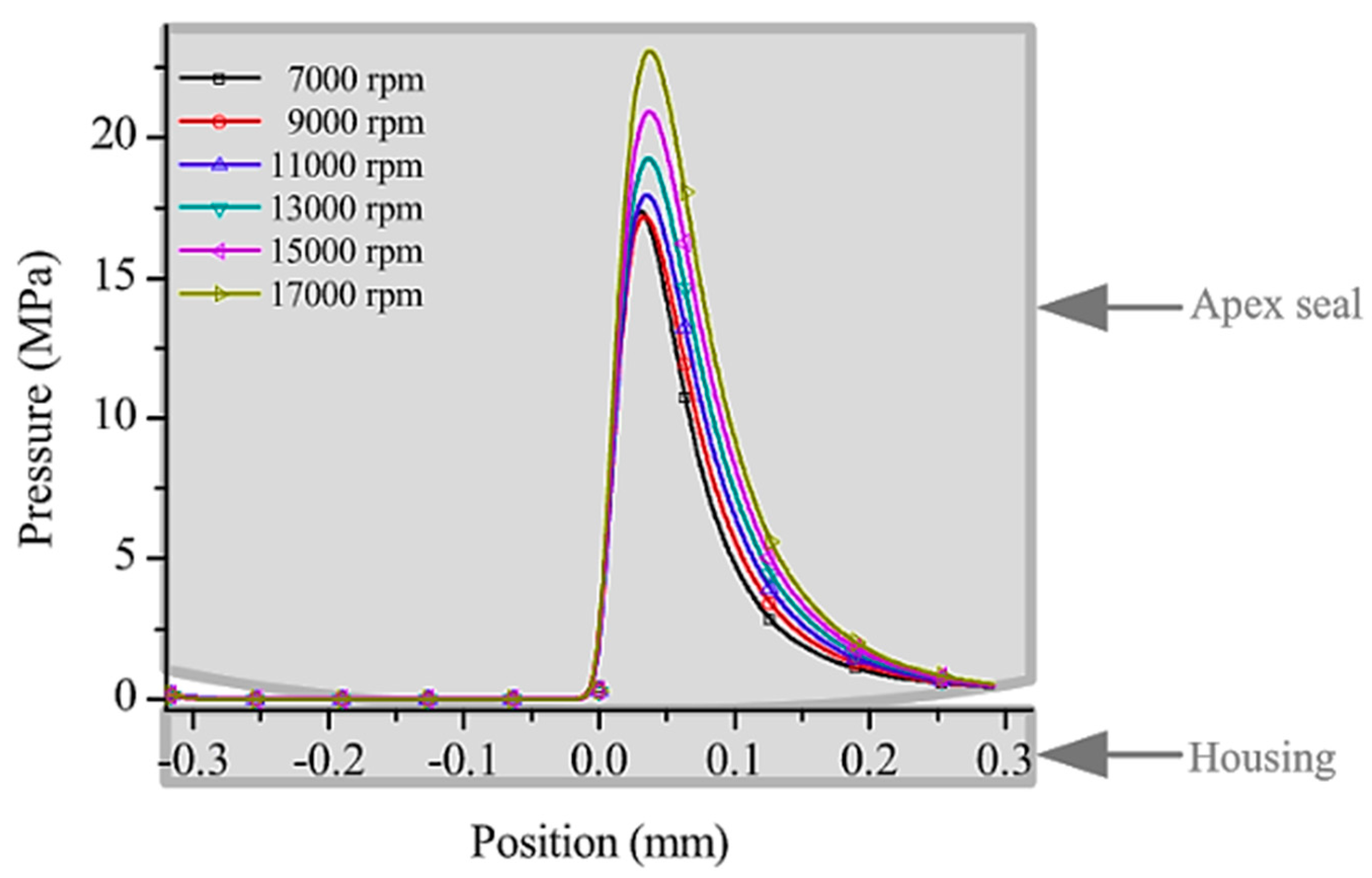
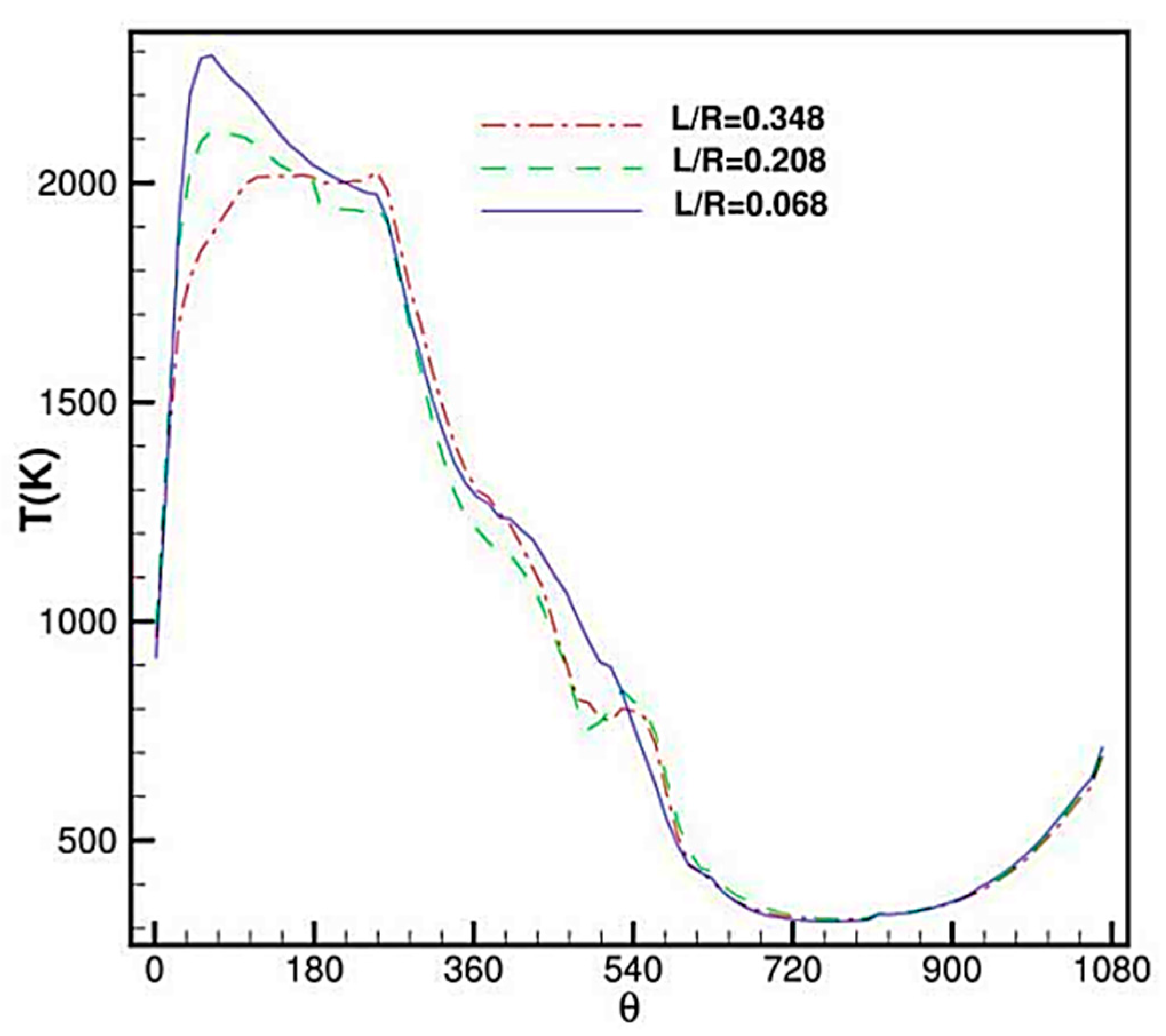
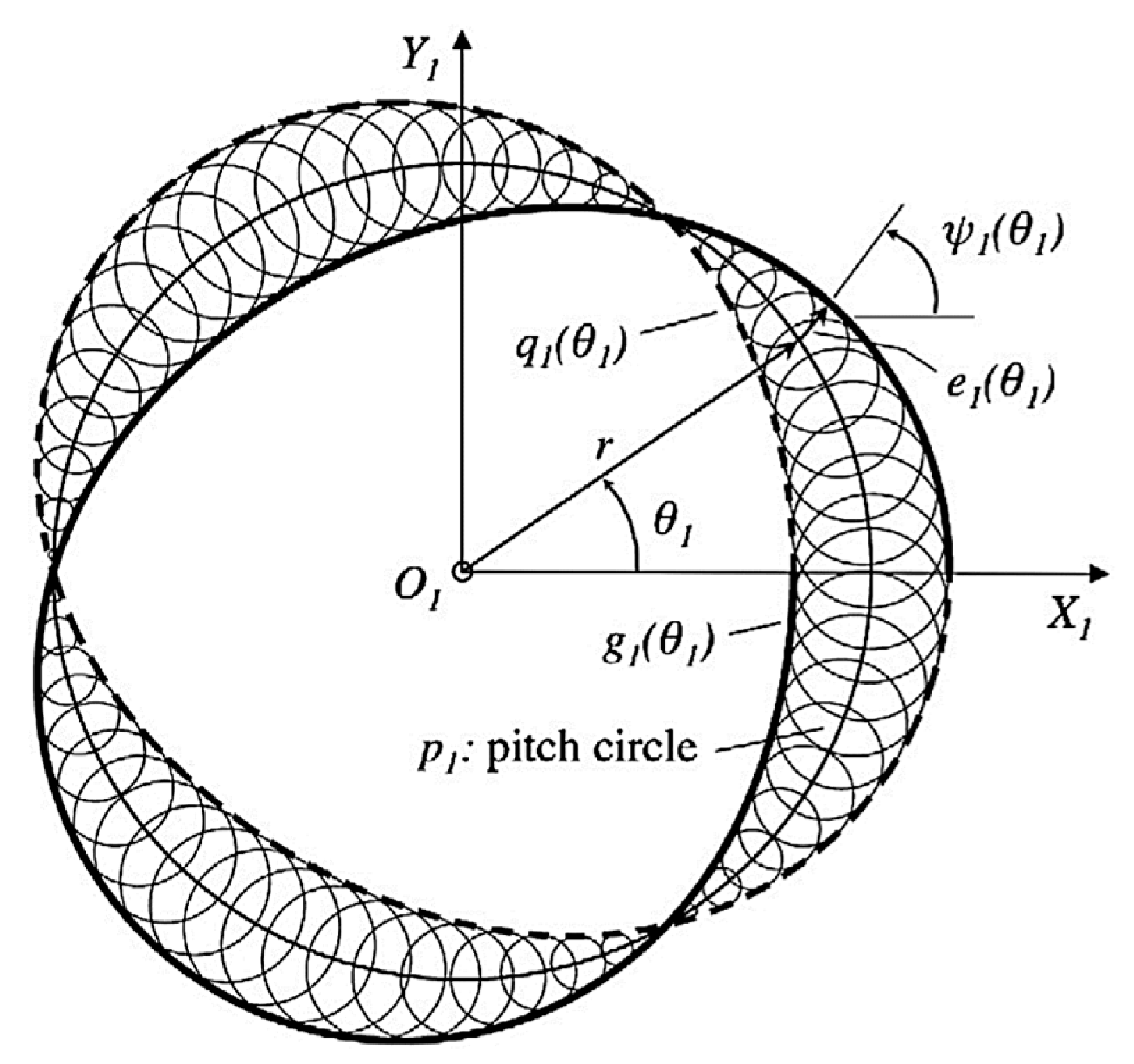

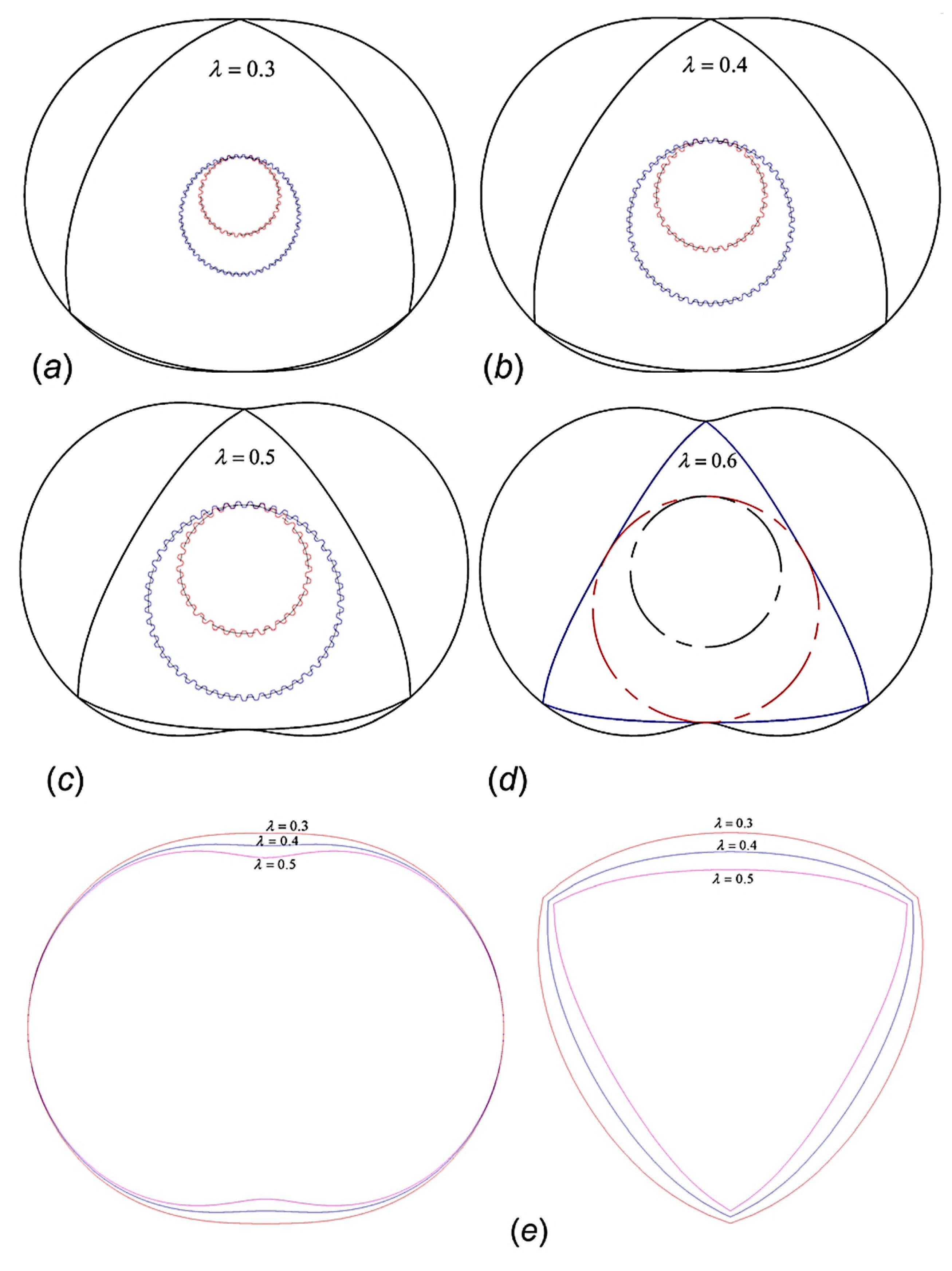




Disclaimer/Publisher’s Note: The statements, opinions and data contained in all publications are solely those of the individual author(s) and contributor(s) and not of MDPI and/or the editor(s). MDPI and/or the editor(s) disclaim responsibility for any injury to people or property resulting from any ideas, methods, instructions or products referred to in the content. |
© 2023 by the authors. Licensee MDPI, Basel, Switzerland. This article is an open access article distributed under the terms and conditions of the Creative Commons Attribution (CC BY) license (https://creativecommons.org/licenses/by/4.0/).
Share and Cite
Johar, T.; Hsieh, C.-F. Design Challenges in Hydrogen-Fueled Rotary Engine—A Review. Energies 2023, 16, 607. https://doi.org/10.3390/en16020607
Johar T, Hsieh C-F. Design Challenges in Hydrogen-Fueled Rotary Engine—A Review. Energies. 2023; 16(2):607. https://doi.org/10.3390/en16020607
Chicago/Turabian StyleJohar, Tehseen, and Chiu-Fan Hsieh. 2023. "Design Challenges in Hydrogen-Fueled Rotary Engine—A Review" Energies 16, no. 2: 607. https://doi.org/10.3390/en16020607
APA StyleJohar, T., & Hsieh, C.-F. (2023). Design Challenges in Hydrogen-Fueled Rotary Engine—A Review. Energies, 16(2), 607. https://doi.org/10.3390/en16020607







